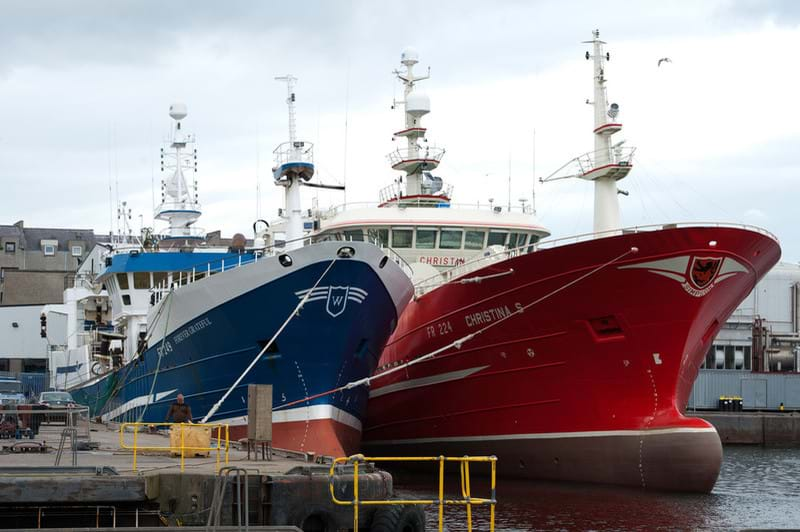Improving safety at sea through vessel design in the pelagic sector
Increasing global temperatures are linked with an increase in both the frequency and severity of extreme weather events such as hurricanes, heatwaves, and flooding. As a result, some fishing sectors are exploring ways of improving safety at sea to better prepare the fleet to face the challenges climate change poses.
This case study explores the ways in which the Scottish pelagic fishing sector is making changes to the design of new vessels to further improve safety for the crews working on board.

The Scottish pelagic sector is largely based in north Scotland and Shetland and often fishes far offshore in the North Sea and northeast Atlantic. Pelagic vessels and their crews are regularly exposed to challenging weather conditions and stormy seas as they fish for popular species like mackerel and herring.
The pelagic industry has always been particularly safety conscious. Our crews were wearing lifejackets and hard hats before they became mandatory. The industry now faces more challenging weather more regularly and so owners are taking steps to build even safer vessels.
The impact of climate change on weather patterns needs to be considered by business owners and vessel designers to make sure that their vessels are fit for purpose.
“We are seeing lots of renewal in the pelagic sector; in the last decade around 85% of Scottish pelagic fleet has been renewed,” says Ian, “Designing and building a new vessel gives the owner a chance to make safety improvements based on their experience at sea.”
Many new build pelagic vessels are making two key changes to vessel design to improve safety:
- Building an extra forward deck to protect crew members from rogue waves – creating an extra deck means that the ship has a higher freeboard, this is the distance between the deck and the water. This deck is used to house the water separator and fish tanks. This is a much safer position for crew members to be in when they are working forward as they will be protected from the ocean swell and rogue waves.
- Moving fish pumping systems from the side of the vessel to the stern – traditionally, pelagic vessels have pumped fish aboard from the broadside. Working from the side means that the vessel is more likely to be side on to ocean swell. By moving pumping systems to the stern, the ship can keep its bow pointed into the wind which is the safest way to face an oncoming swell.
“Safety at sea is paramount to the fishing industry, and continuously improving our safety credentials is an important part of attracting new entrants to the pelagic fishery,” says Ian